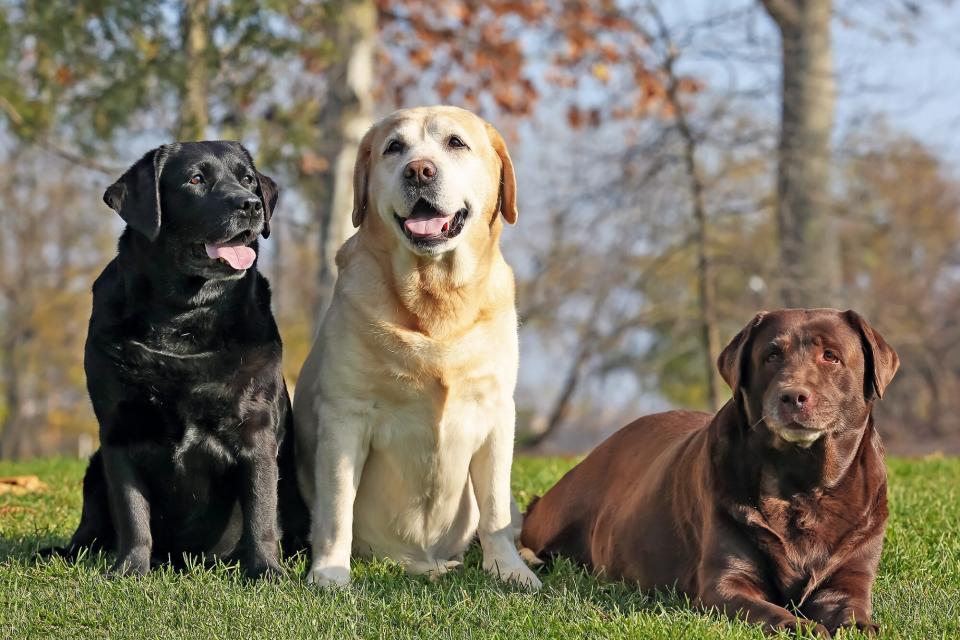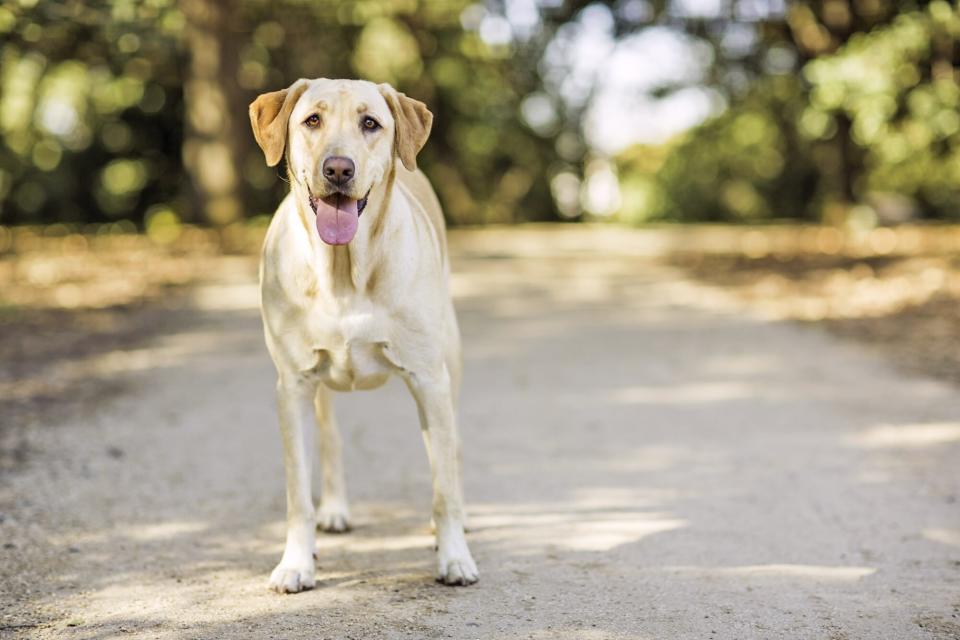How Many Types of Labradors Are There? Really Only One, But Here's Why They May Look Different

Anna Goroshnikova / Shutterstock
The Labrador retriever—a Canadian native—has been America's most popular dog for more than 30 years. With the different head and body shapes and colors we see across the breed, are there multiple types of Labradors?
While technically there's only one type of Lab, some breeders want these devoted pooches to accomplish different tasks (like hunting and retrieving or just active companions), so they might be a tad dissimilar—but not by much. We asked Ron Morelos, a breeder and owner of Stonewall Labradors, to explain.
"There's only one Labrador retriever. It's a misnomer to call them 'American' or 'English'—no such thing," he says. But why is there some confusion about this breed? Let's take a closer look.
RELATED: 13 Dog Breeds Fit to Be Your Next Hunting Companion
The History of Labradors
According to the Labrador Retriever Club (LRC), the true origin of Labradors is a bit of a mystery. First noticed in the northeastern Canadian province of Newfoundland (not nearby Labrador, as the name suggests), there's little recorded history of just when these water-loving dogs appeared. The Kennel Club in the U.K. suggests they were in the area as far back as the 1500s, dedicated to working alongside and living with fishers and explorers active in the trade routes between Europe and Canada. These sporting pups helped retrieve nets in the sea and wild game on land.

Liudmila Chernetska / Getty
They had various names in the early years, including St. John's dogs, Little Newfoundler, black water dogs, and Lesser Newfoundland (as to not be confused with that big boi, the Newfoundland).
English noblemen visiting Canada considered the Lab's retrieval skills a great benefit and returned to their homeland with devoted canines they hoped would become exceptional in the field. Specifically, Colonel Peter Hawker and the Earl of Malmesbury worked to breed Labs into gun dogs in the mid 1800s. The Kennel Club later recognized the Labrador retriever as an official breed in 1903.
English Lab vs. American Lab: What's the Difference?
So are there different types of Labrador retrievers? Not exactly, since the modern dogs are all considered descendants of the same Newfoundland breed line, and most Lab breeders follow the official breed standard recognized by The Kennel Club as well as the American Kennel Club (AKC), which first registered the Lab in the U.S. in 1917.
However, other breeders follow the Labrador retriever standard established by the Federation Cynologique Internationale (FCI), which differs slightly from the U.S. version, which is why there's a little confusion as to the types of Labradors available and what they look like.
"The terminology of 'American' or 'English' typically refers to the style of Labrador," says Morelos, who's also director of the LRC. "When people refer to 'American,' they're talking about a lighter-boned, less bodied style, which you see more commonly in field events. When people refer to 'English', they're typically referring to a more muscular body and broader head. This style you'll see in most conformation events [dog shows]."
So while the differences are minor between the two styles, this is what you might notice.
American Lab

Purple Collar Pet Photography / Getty
Morelos says this style is sometimes a little more high-energy. She might be a bit lankier, too, yet slightly bigger. According to Pheasants Forever, she'll be more likely to have the athleticism to dive into the water "to retrieve a shot bird" and "work all day hunting doves in the heat."
English Lab

Judal / Shutterstock
Often more stocky, calm companions on major fowl hunts lasting several days, their disposition has to remain controlled with all the chaos going on around them before they're sent to retrieve downed game.
Here's what the two types have in common:
Both breed standards for Labrador retrievers acknowledge the same primary coat colors: black, chocolate, and yellow.
They also outline swift assets for swimming such as webbed feet, insulating double coats, and "otter tails"—strong tails that function like rudders to guide them through the water. They share similar "blocky" heads, too.
They are highly intelligent and respond well to positive reinforcement training.
The general temperament is the same as well, Morelos says. "The ideal disposition is one of a kindly, outgoing, tractable nature; eager to please and non-aggressive towards man or animal. The Labrador has much that appeals to people; his gentle ways, intelligence, and adaptability make him an ideal dog." Guess that's why this pooch ranks number one year after year!
RELATED: More to Love! There Are Three Types of Golden Retrievers—Here's How to Tell Them Apart
Which Type of Lab Is Best For You?
Whether you're in need of a skilled bird dog or simply want a loving and active four-legged family member, you can't go wrong with a Labrador retriever. If you do not have any intentions of hunting with your Lab, avoid working lines as these dogs have been bred to work and will not be happy without a job to do.
Morelos notes that whatever type of Lab you're wanting, you should take care to choose a responsible breeder. Labs are commonly affected by elbow and hip dysplasia and eye problems, so ask the breeder if they perform health screenings on their dogs, and ask for the health certificates. Any responsible breeder will be more than happy to share the health information of their dogs.

